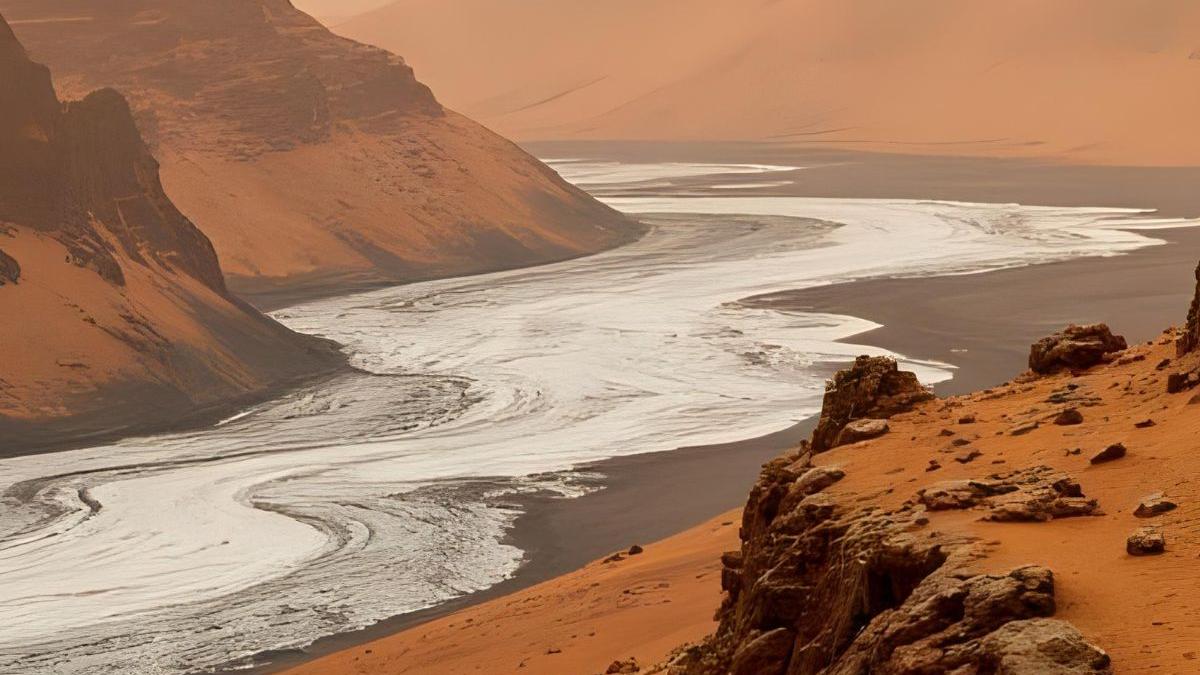The ice, protected by a thin debris layer, could be a vital resource for future human missions, providing easily accessible water, oxygen, and fuel
Mars has long fascinated scientists and space explorers, especially when it comes to the presence of water. Now, new research offers a clearer picture of the glaciers scattered across the Red Planet and it’s exciting news for future human missions. It turns out these glaciers may be made up of more than 80 percent pure water ice, and in some cases, almost entirely of ice.
How do glaciers on Mars look?
On Mars, many of the glaciers lie on mountain slopes and are covered with dust and rocks. For years, scientists believed these formations were mostly rocky with some ice, about 30 percent, or, at best, heavily debris-covered glaciers with more than 80 percent ice. But this new study challenges those earlier views.
What’s new about this study?
Published recently in Science Direct, the research shows a surprising uniformity in the glaciers’ composition. Unlike earlier studies that used different methods on different sites, making it hard to compare results, this one applied a single technique across multiple locations. It found that glaciers in both hemispheres of Mars are made up of a high percentage of clean ice.
One of the researchers, Isaac Smith, explained that earlier research used different tools and focused on different parts of Mars, making comparisons tricky. He is a senior scientist at the Planetary Science Institute and an associate professor at York University in Canada.
What tools did they use?
The team used SHARAD (SHAllow RADar), a radar instrument on NASA’s Mars Reconnaissance Orbiter. By measuring how radar waves travel through the surface and how much of the signal is lost, they were able to estimate the ratio of ice to rock inside the glaciers. Their findings suggest the glaciers have a surprisingly high level of ice purity.
Why is this important?
High-purity glaciers could be a game-changer for human missions to Mars. Water is essential, not just for drinking, but also for making oxygen and rocket fuel. If astronauts can find ice that’s already clean, it will take much less energy to extract and use it, compared to ice that’s mixed with lots of rock and dirt.
According to the study, the clean ice is protected by a thin layer of rock or dust. This layer acts as insulation, keeping the ice safe from Mars’ extreme cold and dry conditions.
How did the ice form?
The researchers suggest a few possible ways the ice might have formed. It could have fallen as snow and collected into glaciers, or it may have formed directly on the ground through condensation. Both processes would lead to fairly clean ice.
What seems unlikely is that the ice formed through what’s called “pore ice”, where water vapour from the atmosphere moves underground and freezes. That process usually leads to more impurities, which weren’t found in these glaciers.
A window into Mars’ past
The consistency of the ice across different glaciers hints that Mars may have gone through a single massive glaciation event, or several smaller ones that had similar conditions.
Subscribe to our Newsletter
Disclaimer: Kindly avoid objectionable, derogatory, unlawful and lewd comments, while responding to reports. Such comments are punishable under cyber laws. Please keep away from personal attacks. The opinions expressed here are the personal opinions of readers and not that of Mathrubhumi.
